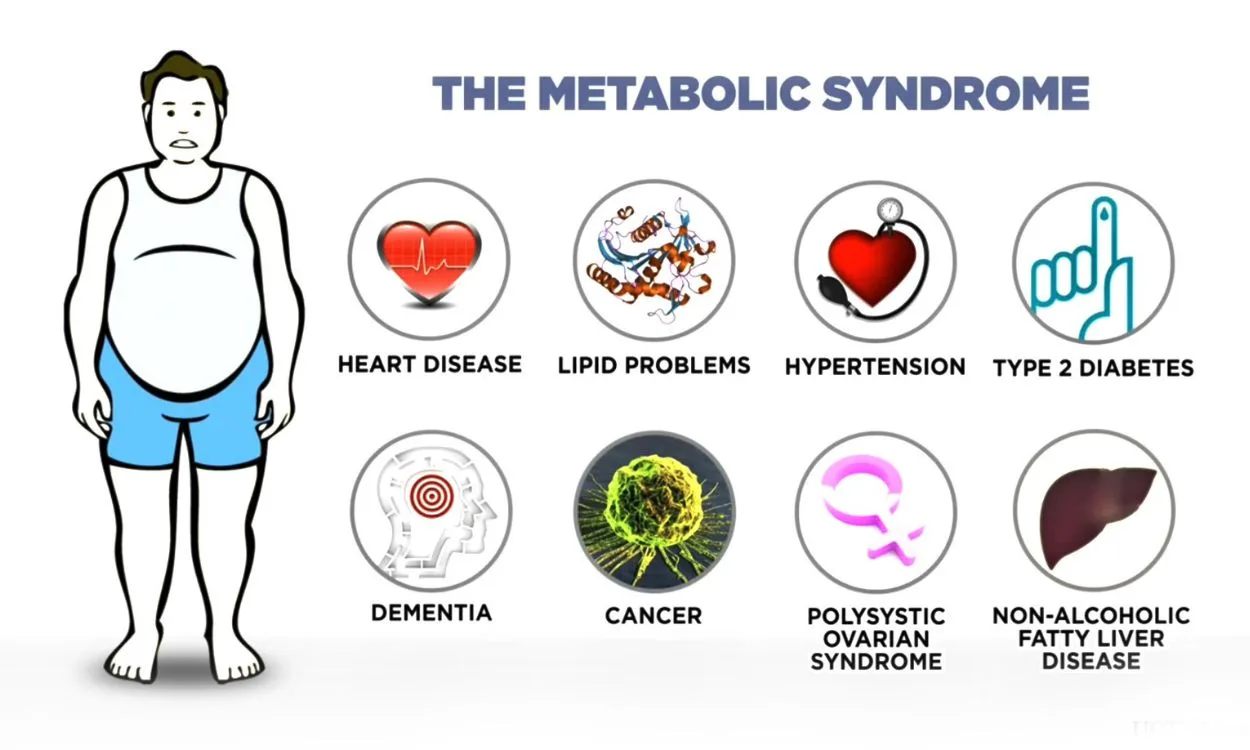Managing Metabolic Syndrome and Cholesterol: The Fitpaa Solution to Your Health and Fitness Goals
Metabolic syndrome is a cluster of conditions that occur together, increasing the risk of heart disease, stroke, and type 2 diabetes. It is characterized by a combination of elevated blood pressure, high blood sugar, excess body fat (particularly around the waist), and abnormal cholesterol or triglyceride levels. These conditions often occur together and are linked to insulin resistance, a condition in which the body does not use insulin effectively.
Here is a detailed explanation of each component of metabolic syndrome and its relation to cholesterol:
- High Blood Pressure: High blood pressure, also known as hypertension, is a common component of metabolic syndrome. It is a condition in which the force of blood against the walls of the arteries is too high, leading to increased strain on the heart and blood vessels. High blood pressure can contribute to the development of atherosclerosis, a condition characterized by the buildup of plaque in the arteries. This plaque can restrict blood flow and increase the risk of heart disease. Additionally, high blood pressure can affect cholesterol levels by damaging the walls of blood vessels, making them more susceptible to the buildup of cholesterol and other fats.
- High Blood Sugar: High blood sugar, or hyperglycemia, is often associated with insulin resistance and type 2 diabetes. Insulin is a hormone that helps regulate blood sugar levels by allowing glucose to enter cells for energy. In insulin resistance, the body’s cells become less responsive to insulin, causing blood sugar levels to rise. Elevated blood sugar levels can contribute to the formation of small, dense LDL (low-density lipoprotein) particles, commonly referred to as “bad” cholesterol. These small particles are more likely to enter the arterial walls and contribute to plaque formation.
- Excess Body Fat: Excess body fat, especially around the waist, is a key component of metabolic syndrome. Abdominal obesity is associated with insulin resistance, inflammation, and abnormal lipid profiles. It can lead to an increase in LDL cholesterol and triglycerides, while also reducing levels of HDL (high-density lipoprotein) cholesterol, often referred to as “good” cholesterol. These imbalances in cholesterol levels can contribute to the development of atherosclerosis and increase the risk of cardiovascular disease.
- Abnormal Cholesterol or Triglyceride Levels: Abnormal lipid profiles, including elevated levels of LDL cholesterol and triglycerides, and decreased levels of HDL cholesterol, are common features of metabolic syndrome. LDL cholesterol is considered harmful because it can deposit cholesterol in the arterial walls, leading to the formation of plaque. Triglycerides, another type of fat found in the blood, can also contribute to plaque formation when present in high levels. HDL cholesterol, on the other hand, helps remove excess cholesterol from the bloodstream, reducing the risk of plaque buildup.
The relationship between metabolic syndrome and cholesterol is complex, with each component influencing the others. By addressing the underlying causes of metabolic syndrome, such as adopting a healthy lifestyle, individuals can improve their cholesterol levels and reduce the risk of cardiovascular disease.
Now that we have explored metabolic syndrome and its connection to cholesterol, let’s discuss how Fitpaa can help you achieve your health and fitness goals, including managing metabolic syndrome.
Fitpaa is an end-to-end AI-driven metabolism monitoring and management technology that can assist you in optimizing your metabolism and improving your overall health.
Here’s how Fitpaa can support you in achieving your goals:
- Metabolism Assessment: Fitpaa offers a comprehensive metabolism assessment that identifies the root cause of your health condition by evaluating your current metabolism. Understanding your metabolism is essential for effectively managing metabolic syndrome and cholesterol levels.
- Personalized Fitpaa Capsule: Based on your metabolism, health goals, lifestyle, and eating habits, Fitpaa prepares a personalized Fitpaa Capsule. This capsule combines medical therapy, medical exercise therapy, medical nutrition therapy, and cognitive behavior therapy to optimize your metabolism, regulate hormones, and achieve your health and fitness goals.
- Fitpaa Realtime Guidance: Fitpaa provides real-time guidance through its digital therapeutic solution and mobile app. It incorporates habit-building concepts, timely nudging, and purpose-finding from cognitive behavioral therapy to keep you motivated and help you take necessary actions to achieve the desired results. The app also includes features like a virtual workout trainer, diet tracker, and performance tracking to make following your Fitpaa Capsule easier.
By following your Fitpaa Capsule, you can improve your cholesterol levels, manage metabolic syndrome, and enhance your overall well-being. Fitpaa’s expert team of fitness coaches, nutritionists, and doctors will regularly review your progress and make any necessary adjustments to ensure you reach your goals.
If you’re ready to experience the joy of getting fit and excel in life, download the Fitpaa app now. With Fitpaa’s guaranteed results and personalized approach, you can transform your health and achieve your fitness goals. Your well-being is our mission!
Remember, with Fitpaa, you’re not just getting a mobile app but a dedicated health and fitness team to support you every step of the way. Don’t hesitate to take the first step towards a healthier and happier life. Request a trial and let Fitpaa guide you towards your dream life.
Download the Fitpaa App now and take control of your health and fitness journey today!









